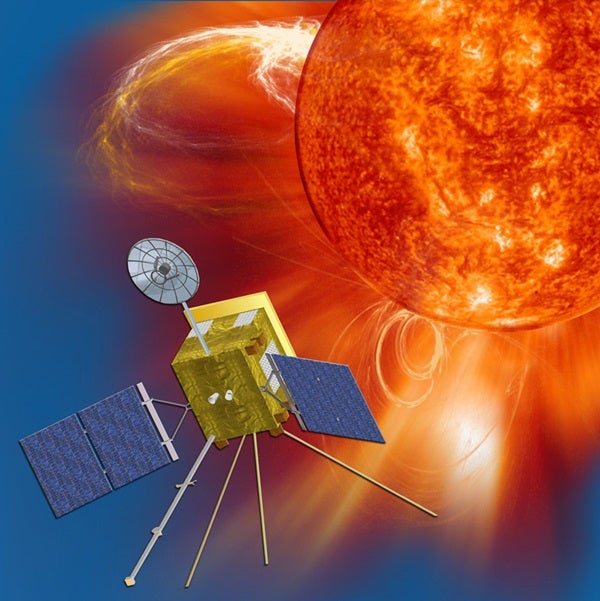An imaging coronal spectrograph will explore the innermost regions of the solar system aboard the Solar Orbiter spacecraft, a NASA and European Space Agency joint mission. Scientists and engineers at Southwest Research Institute (SwRI) in Boulder, Colorado, designed the device, called SPICE (Spectral Imaging of the Coronal Environment). Solar Orbiter will be positioned at about one-fourth the distance of Earth from the Sun.
The SPICE instrument is one of ten selected to fly aboard the spacecraft. SPICE will measure different wavelengths of light emitted from the Sun to evaluate its plasma properties and composition with unprecedented spatial and spectral resolution. Measuring these plasma properties remotely with SPICE and other instruments on the Solar Orbiter spacecraft will help researchers understand the connection between the solar wind and its source regions near the Sun. The data will advance our knowledge of the Sun’s dynamics to better understand its effects on Earth and the solar system.
“SPICE is uniquely suited to fill a critical gap in our understanding of the basic conditions near the Sun and how these conditions affect the solar wind and the space environment near Earth,” said Don Hassler, SPICE principal investigator and senior research scientist in the Boulder office of SwRI’s Space Science and Engineering Division.
The SPICE investigation is part of NASA’s Living with a Star Program, which is designed to understand how and why the Sun varies, how planetary systems respond, and the effects on human space and Earth activities. NASA’s Goddard Space Flight Center in Greenbelt, Maryland, manages the program for the agency’s Heliophysics Division of the Science Mission Directorate.
“One of the greatest threats to human space exploration is the sudden, unpredictable occurrence of radiation outbursts from the Sun,” said Hassler. “Even satellites and power grids on and around Earth are at risk. By improving our understanding of the dynamics of the Sun, SPICE will help develop the capability for forecasting and predicting solar conditions that could affect space travelers as well as life here on Earth.”










